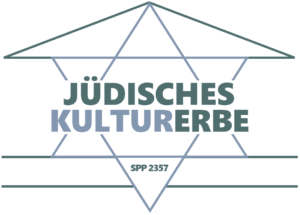Call for Papers
Conference: Jewish or Common Heritage? (Dis-)appropriation of Synagogue Architecture in East – Central Europe since 1945
The synagogues that remained standing after World War II have faced an uncertain destiny. As abandoned buildings, they were susceptible to decay quickly and, as former buildings of worship, for legal, cultural and architectural reasons, posed a great challenge in terms of their reuse. Consequently, many synagogues simply fell into ruins, some were turned into secular buildings of various purposes, and few could have been used as houses of prayer again.
In postwar Europe, synagogue architecture was culturally categorized as an element of Jewish heritage that appeared to be isolated from the common heritage of a city or town–wherever a synagogue stood. At first, synagogues were not considered a shared but a distinct patrimony of a place. A shift in such a state of affairs could have been observed in the last three decades that witnessed a ‘rediscovery’ of synagogues. Though one can still find abandoned synagogues in small towns, in most of the bigger municipalities, these buildings were ‘rediscovered’ as a part of local history and culture and thus became part of the common heritage. In many regions of Europe, the ‘rediscovery’ of the former synagogues led to their restoration and opening to the public, and in rare cases, to their reuse by Jewish communities.
These processes have already been quite well researched in western other parts of Europe. A desideratum, however, is approach to the Jewish architectural heritage in those East-Central European territories, whose state affiliation changed after 1945 and whose population was exchanged. For example, in the former Eastern German territories, synagogues still standing at the end of the war became a foreign body in the urban space in a double sense. They neither belonged to the heritage of the new inhabitants, understood as ‘national’ or ‘own’, nor were they clearly attributable to the heritage of the pre-war German population. Synagogues were, therefore, not ‘hostile’ buildings, but in any case, they were irritating as characteristic objects of architecture. A contributing factor was that Jewish communities lasted only in a few cities in these areas.
The aim of the conference is a historicization of the processes of rediscovery in the recent past. We invite contributions linking the historical dimension in dealing with the Jewish architectural heritage with current developments in this field. The focus will be on the historical, political and cultural preconditions and present processes having an impact on the handling of the Jewish built heritage. The key actors and decision-makers should also be taken into account. Therefore, the connection of the micro and macro levels is indispensable for the understanding of these developments because the impact of local actors and political decisions at the central level are closely interrelated. Global and memory culture trends have also contributed to the interest or disinterest in the respective religious buildings. In addition, transnational networks that influenced the preservation of synagogues will be considered, for example, in the context of the Polish-German dialogue.
The conference will not only discuss examples of a ‘successful rediscovery’ of Jewish architectural monuments. The aim is rather to draw conclusions about broader contexts based on concrete examples. It may be possible to identify patterns that indicate ‘success’ or ‘failure’ of the rediscovery. We also invite contributions that would pose the question of a model of a ‘successful’ or ‘failed’ rediscovery. If possible, however, the focus should be on those East-Central European cities or regions whose territorial affiliation changed in the wake of World War II.
The conference is a cooperation of Bet Tfila-Research Unit for Jewish Architecture in Europe at TU Braunschweig, GHI Warsaw and POLIN Museum of the History of Polish Jews. It takes place within the framework of the ‘DFG Priority Program 2357: Jewish Cultural Heritage’, which is funded by the German Research Foundation.
The conference will take place on 12-14 September 2023 at the POLIN Museum for the History of Polish Jews and the German Historical Institute in Warsaw. Travel costs to and from the conference can be reimbursed within the usual limits.
Submissions will be accepted from any discipline as long as the topic relates to this broad theme. Scholars, experts and practitioners are welcome. Abstracts should be 200-300 words long Although we welcome speakers from any country, the language of the conference will be English. For best consideration, please submit your abstract and a short CV by 31 January 2023 to Kamila Lenartowicz (k.lenartowicz@tu-braunschweig.de) and Christhardt Henschel (henschel@dhi.waw.pl). Applicants will be informed about their participation by 14 March 2023.
Date: 12-14 September 2023
Organizers: Kamila Lenartowicz, Zuzanna Światowy (Bet Tfila-Research Unit for Jewish Architecture in Europe, Technische Universität Braunschweig),Christhardt Henschel (German Historical Institute, Warsaw), Aleksandra Jakubczak-Gabay (POLIN Museum of the History of Polish Jews)
Venue: German Historical Institute and POLIN Museum of the History of Polish Jews
Deadline for submission of proposals: 31th January 2023
18. Januar 2023

